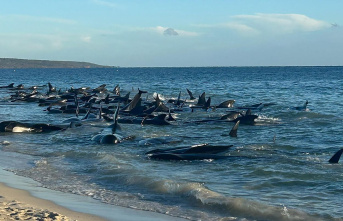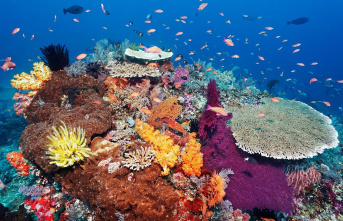Zander, salmon and herring: the average German eats around 14 kilograms of fish a year. Compared to 76 kilograms of bread, that seems quite modest. Nevertheless, the aquatic animals are a real benefit for health, because they contain nutrients that are not found in grain, other plants or meat in this quantity and variety.
In terms of quantity alone, protein is one of the most important nutrients in fish. There are around 20 grams of protein in 100 grams of trout, zander, halibut or tuna. The human body uses the amino acids, for example, to build muscles or to produce enzymes and hormones. However, the fact that experts recommend one to two servings of fish per week is also due to the omega-3 fatty acids in the fish.
Polyunsaturated fats such as DHA and EPA are essential for us to live. We cannot make them ourselves. On the other hand, fatty fish such as salmon, mackerel or herring contain a lot of it.
In addition, fish is one of the most important natural sources of iodine. This is not unimportant, because the iodine supply of the population is not quite optimal, despite the addition to table salt. The body needs the trace element to build up the thyroid hormones, which in turn control the energy metabolism, heart rhythm and blood pressure. Just one or two larger portions of sea fish such as herring or cod can cover the daily requirement. Selenium also supports the function of the thyroid gland, and it also promotes the formation of sperm.
And then there are the vitamins A (for growth), B6 (for the production of messenger substances), B12 (for blood formation), niacin (for energy metabolism) or D (for the bones), which vary in amounts depending on the fish species and compilations occur.
no There is almost no difference between frozen and fresh fish. Nutrients and vitamins are also retained in the freezer. However, freezing has an advantage: many parasites and bacteria such as listeria are killed in the freeze. In raw or smoked fish, on the other hand, you can find them again and again. Pregnant and weakened people should therefore better avoid it.
The way to the freezer, on the other hand, could be problematic. When Ökotest recently examined frozen fish, it was not pathogens that they found in abundance, but microplastics - the laboratories counted more than 4000 plastic particles per fish fillet on average. The microplastics may have gotten into the fillets during processing and packaging. It is unknown whether the plastic poses a risk.
You can find that in fish too. Because the pollution of seas, lakes and rivers does not go unnoticed by the animals living in them.
The testers usually detect quantities that are not harmful to health. But there are also exceptions: Tuna in particular, but also swordfish, cod, pike or hake can be contaminated with methyl mercury, a compound that is even more toxic than ordinary mercury. It occurs, for example, when certain bacteria in the depths of the sea decompose dead algae contaminated with mercury. The mercury itself enters the atmosphere during volcanic eruptions and forest fires, but also during the burning of coal or the production of cement. Most of it then ends up in the sea via precipitation. Saltwater fish in particular accumulate mercury compounds over the course of their long lives. Nevertheless, the specified maximum amounts are rarely exceeded. When the Austrian Agency for Health and Food Safety examined the mercury levels in 102 samples of sea fish in 2018, three samples had exceeded the maximum level for mercury. In two samples the mercury was in the range of the maximum level.
According to the DGE, the advantages of fish outweigh the disadvantages for most people. At least if you leave it at the recommended amount. The situation is different for women who are pregnant or breastfeeding. The Federal Institute for Risk Assessment (BfR) advises you to largely avoid these fish. Large amounts of methylmercury can cause neurodevelopmental damage in the unborn child and infant because it crosses the blood-brain barrier and the placenta.
In Lower Saxony, anglers are also advised not to eat river fish regularly: they sometimes contain large amounts of dioxins and perfluorinated alkyl substances, some of which are suspected of being harmful to health.
Yes, most of the nutrients are also found in plant foods. Legumes such as peas, lentils or beans, for example, are not only rich in protein, but also in fiber, minerals and vitamins. Algae also contain a lot of nutrients, including the trace elements iodine and selenium. The essential omega-3 fatty acids, on the other hand, are found in nuts and rapeseed or linseed oil.
Only vitamin D is almost exclusively found in animal foods. However, we cover most of our needs ourselves when we are out in the sun.












